Last August after moving my son to LA, I took some time driving back to Kansas City to scout areas I thought would make for a good photography workshop. That scouting paid off with a great trip early this June, when I returned with six clients for four days of fun and great photos.
When planning a workshop, I always tell people that I promise two things: one, that they’ll have the opportunity to shoot lots of photos, and two, that they’ll go home tired. Lots of down time are never a part of my workshops. You get better at photography by shooting pictures, and we do a lot of that on my trips. Most of the group started and finished in Phoenix (two drove and met us in Page), and between leaving there Tuesday morning and returning Sunday afternoon, we drove 1500 miles. Yes, we covered a lot of ground, from Phoenix to Page to Bryce Canyon National Park, back to Page, then on to Monument Valley before returning to Phoenix. When you see the photos, I think you’ll agree it was miles well spent.
This was primarily a landscape trip, with three evenings planned as night shoots. With that in mind I recommended a certain range of lenses and gear. Here’s what I brought along:
- Nikon Z7 and Z6 cameras (Z6 primarily for night photography).
- Nikon D80 converted to infrared.
- Nikkor 16-35mm f/4 lens.
- Nikkor 20mm f/1.8 lens (for night photography).
- Nikkor 24-70mm f/2.8 lens (primarily for night photography).
- Nikkor 24-120mm lens.
- Nikkor 70-200mm f/2.8 lens.
- Polarizing, 3-stop soft graduated and 10-stop ND filters.
- Carbon fiber travel tripod with ballhead.
- Four Lume Cubes with accessories (diffusers and light shapers), two flashlights and a headlamp.
- Red pinch-lights for the entire group (to save our night vision).
Most people don’t get much opportunity to do night photography, so I try to include it in any workshop I can. However, it’s really important to know ahead of time your locations, how to get there and how and where to set up lighting once it gets dark. Having scouted the year before, I already knew a great spot on public land outside of Page, and had a great Navajo guide who specializes in night photography booked for two nights in Monument Valley. That pretty much guaranteed everyone would have a good night photography experience.
All in all, it was a great trip. No, we didn’t sleep much. Yes, we got a little cold staying out in the desert until nearly sunrise. We ate sandwiches on the road at times and drank copious amounts of water due to the heat. Was it worth it? I’ll let the photos speak for themselves.
(If you’re interested in doing this trip with me next year (2020), drop me an email and I’ll let you know when the trip is planned and posted.)
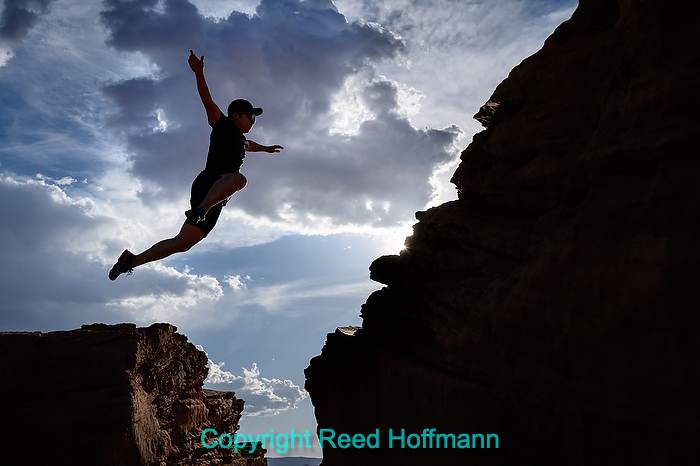
With photography, getting someplace early is rarely a problem, but getting there late almost always is. So we arrived at Horseshoe Bend two hours before sunset, and I told my group to explore and find where they wanted to shoot sunset from. And, of course, it’s always possible you’ll find some fool thinking it’s a good idea to jump a gap in the rocks near the edge. Nikon Z7, Aperture Priority, Sunny white balance, ISO 100, 1/3200 at f/10 in Matrix metering, -2.0 EV, Nikkor VR Zoom 16-35mm f/4G IF-ED lens at 35mm. Photo copyright Reed Hoffmann.
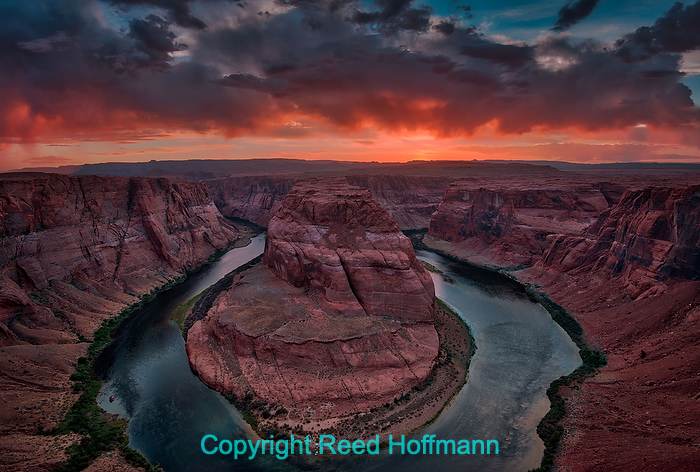
I read a story last year that Horseshoe Bend is one of the most Instagrammed places in the country. If you visit, you’ll see why. We had a beautiful sunset, but with such a great difference in brightness between the sunlit sky and the rocks in shadow, I needed to merge five different exposures to create this picture. Nikon Z7, Manual exposure, Sunny white balance, ISO 100, 1/3 to 1/80 second at f/11, Nikkor VR Zoom 16-35mm f/4G IF-ED lens at 16mm. Photo copyright Reed Hoffmann.
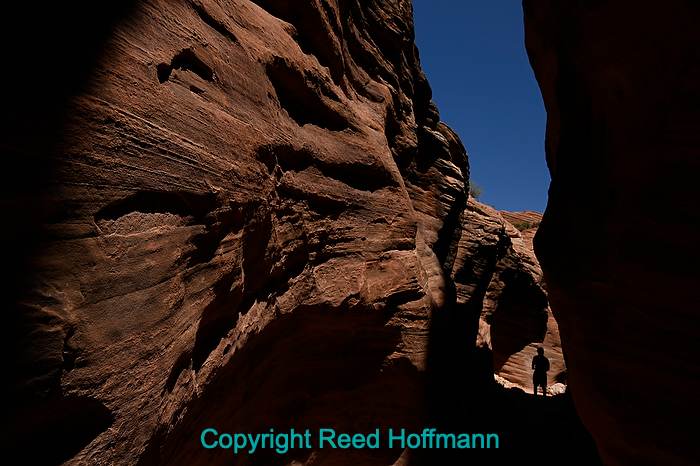
While there are some justly famous slot canyons near Page, they’re tightly controlled and charge a high fee to visit. With a little research you can find some beautiful slots on public land if you’re willing to drive and hike a bit. Nikon Z7, Aperture Priority, Sunny white balance, ISO 100, 1/250 at f/10 in Matrix metering, -1.7 EV, Nikkor VR Zoom 16-35mm f/4G IF-ED lens at 21mm. Photo copyright Reed Hoffmann.
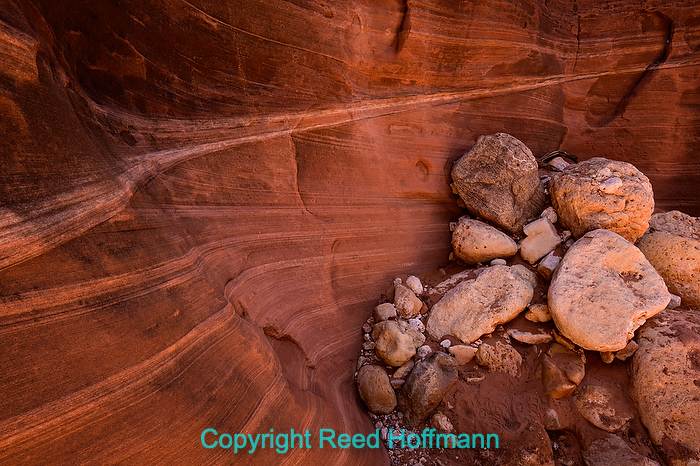
I call them “Southwest still lives,” those little compositions of rocks and striped stone that are common to the area. Nikon Z7, Aperture Priority, Sunny white balance, ISO 64, 1/3 at f/16 in Matrix metering, -0.3 EV, Nikkor VR Zoom 16-35mm f/4G IF-ED lens at 20mm. Photo copyright Reed Hoffmann.
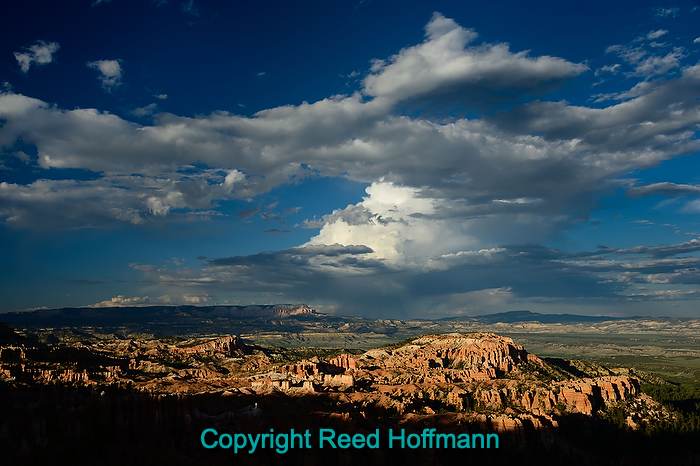
Bryce National Park is only 2.5 hours away from Page, so I took the group there late one afternoon to shoot through sunset. We worked the area between Sunrise Point and Sunset Point. The clouds and shadows made for some very nice photos. Nikon Z7, Aperture Priority, Sunny white balance, ISO 64, 1/125 at f/8 in Matrix metering, -0.7 EV, Nikkor VR Zoom 24-120mm f/4G IF-ED lens at 31mm. Photo copyright Reed Hoffmann.
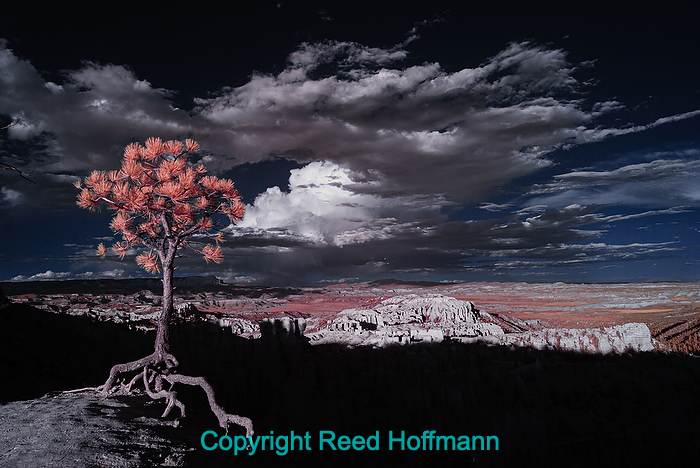
I brought along an old Nikon D80 that I’d had converted to infrared and used it quite a bit. This was shot with that camera, then afterwards I worked the Color Channels and Hue/Saturation controls in Photoshop to create this image. Nikon D80, Manual, Preset white balance, ISO 100, 1/250 at f/8 in Matrix metering, 0.0 EV, Nikkor VR Zoom 16-35mm f/4G IF-ED lens at 17mm. Photo copyright Reed Hoffmann.
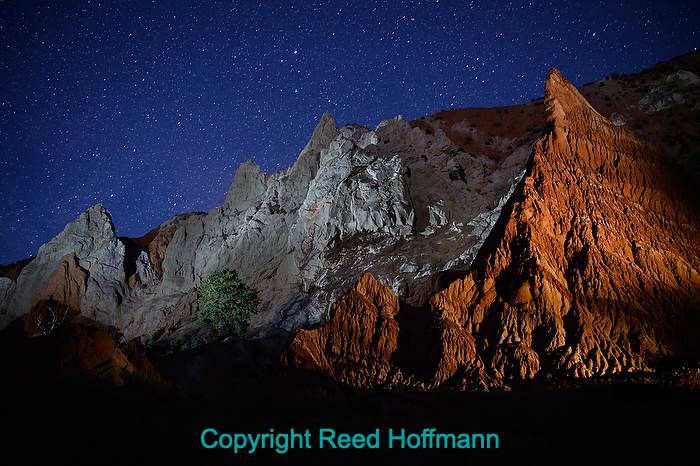
One bonus to having scouted the area ahead of time was finding places like this, down one of the dirt roads near Page. This was the first of three night shoots we did. To light the rocks, I set up two Lume Cubes, with barndoors, at right for the red formation. Then I walked down the road to the left and used a flashlight to paint light onto the ridge behind, having one of the group trip my shutter. Nikon Z6, Manual exposure, Sunny white balance, ISO 1000, 30-seconds at f/2.8, -0.3 EV, Nikkor VR Zoom 24-70mm f/2.8 lens at 28mm. Photo copyright Reed Hoffmann.
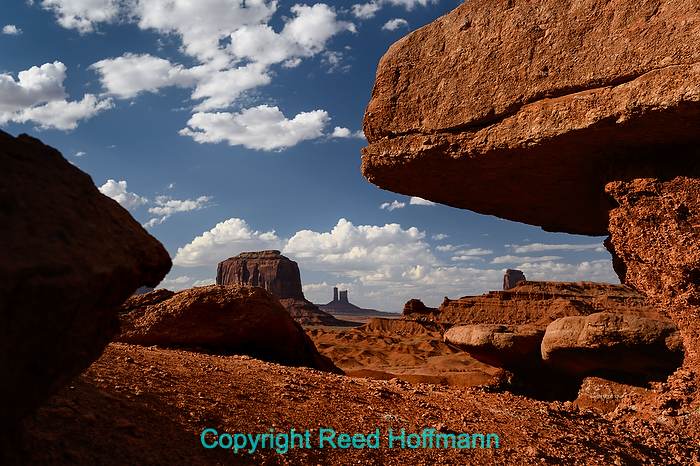
We spent our last two days in the Monument Valley area, and both days worked from late afternoon through night in the valley itself. This is near John Ford’s Point. I put the camera on the ground, using the LCD to frame the scene. Nikon Z7, Aperture Priority, Sunny white balance, ISO 125, 1/100 at f/11 in Matrix metering, 0.0 EV, Nikkor VR Zoom 16-35mm f/4G IF-ED lens at 32mm. Photo copyright Reed Hoffmann.
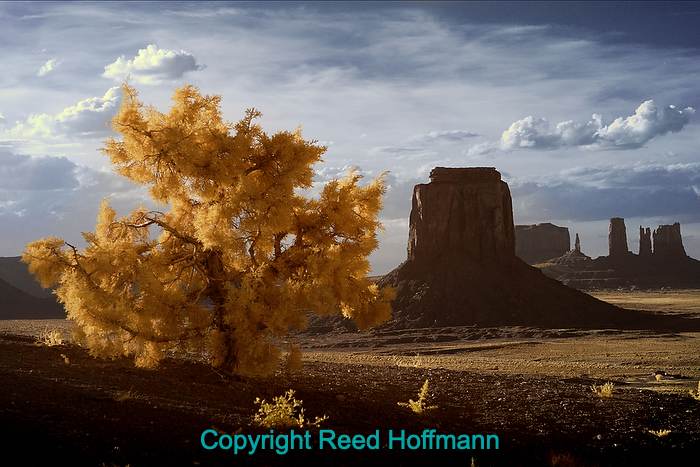
Again using my infrared camera, and once again working with the Channels and Hue/Saturation controls in Photoshop to make this picture. Nikon D80, Aperture Priority, Preset white balance, ISO 250, 1/160 at f/8 in Matrix metering, -0.3 EV, Nikkor VR Zoom 24-120mm f/4G IF-ED lens at 52mm. Photo copyright Reed Hoffmann.
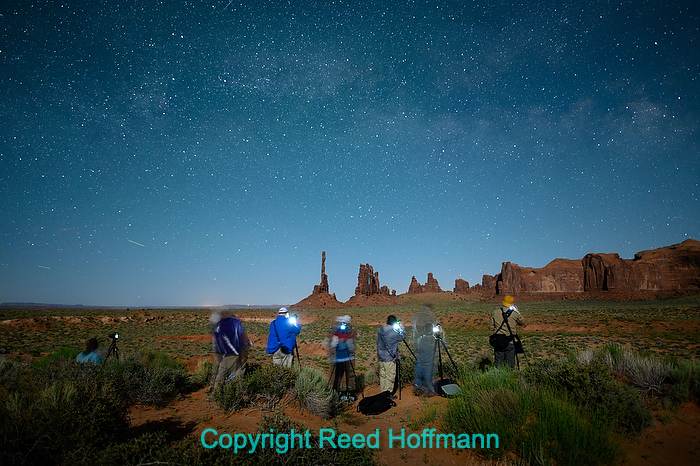
I hired a great Navajo guide I’d met the year before to take us to some private spots in the valley for two night shoots. Here the group is setting up to shoot the Milky Way over the Totem Pole. Nikon Z6, Manual exposure, 3800K white balance, ISO 2500, 20-seconds at f/2, Nikkor AF 20mm f/1.8G lens. Photo copyright Reed Hoffmann.
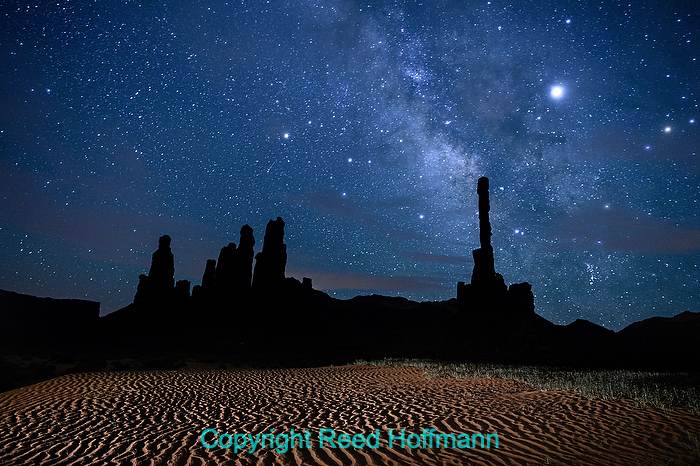
At a closer spot to the Totem Pole, I added the light from a Lume Cube splashed across a sand dune in the foreground to add more interest and depth to the scene. Nikon Z6, Manual exposure, 3800K white balance, ISO 8000, 30-seconds at f/2.8, Nikkor VR Zoom 24-70mm f/2.8 lens at 24mm. Photo copyright Reed Hoffmann.
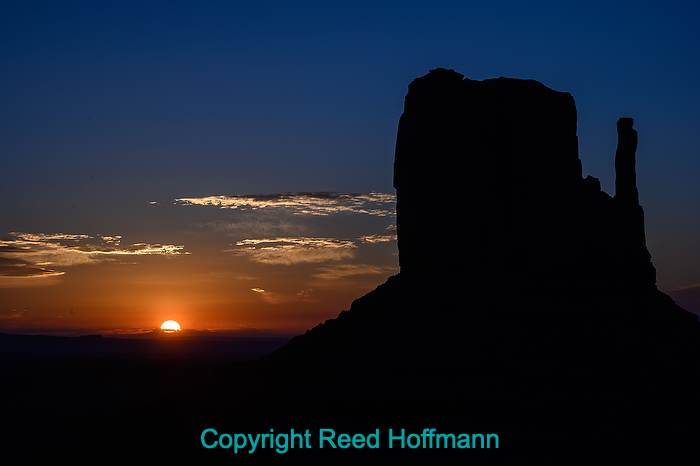
After the first late-night shoot we returned to the hotel for 90-minutes sleep before heading back to the valley for sunrise. It was nice, but I think next time we’ll sleep in! Nikon Z7, Aperture Priority, Sunny white balance, ISO 64, 1/125 at f/16 in Matrix metering, -1.7 EV, Nikkor VR Zoom 24-120mm f/4G IF-ED lens at 100mm. Photo copyright Reed Hoffmann.
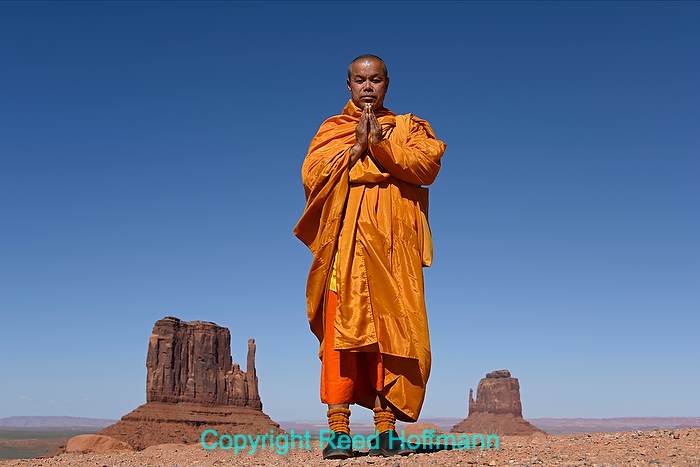
There’s an old saying in photography, “It’s better to be lucky then good.” Arriving at Monument Valley our second afternoon, there was a group of monks at the overlook. I told my group to get out there quick and shoot. We were able to catch the last monk praying. He said they were Buddhist, and from Thailand. We got lucky. Nikon Z7, Aperture Priority, Sunny white balance, ISO 64, 1/400 at f/7.1 in Matrix metering, -0.3 EV, Nikkor VR Zoom 24-120mm f/4G IF-ED lens at 40mm. Photo copyright Reed Hoffmann.
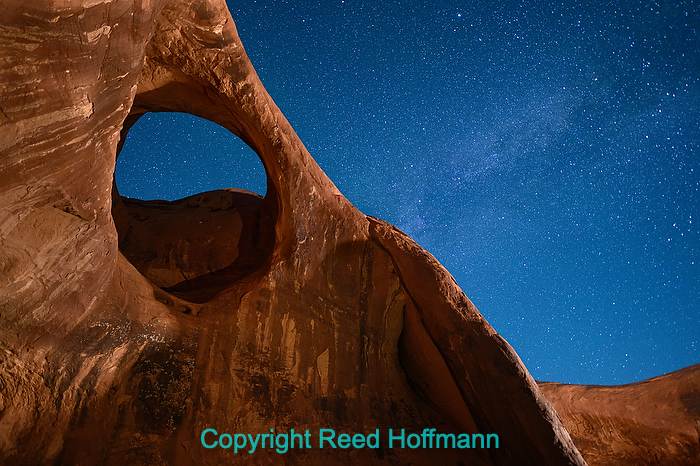
When most people think of Monument Valley, they think of the massive monoliths of stone. But if you hire a Navajo guide, they can take you to the private areas where you’ll find a number of fantastic arches. Moccasin Arch is one of them, and we used two Lume Cubes to light it for our photos. Nikon Z6, Manual exposure, 3800K white balance, ISO 6400, 15-seconds at f/2, Nikkor AF 20mm f/1.8G lens. Photo copyright Reed Hoffmann.
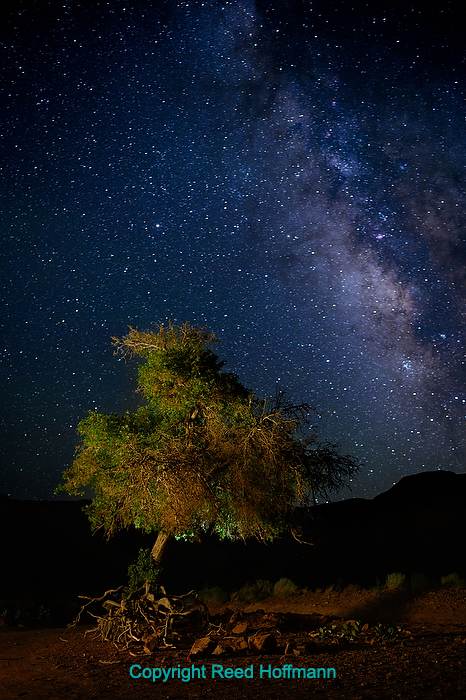
Our final shoot was certainly a special one. It was 2:30am, the moon had set, and our guide knew that the Milky Way would be above Sun’s Eye Tree. We used two Lume Cubes for lighting, one behind and underneath the tree, the second to the left bouncing light off a red sandstone wall. Nikon Z6, Manual exposure, 3800K white balance, ISO 3200, 30-seconds at f/2.8 Nikkor VR Zoom 24-70mm f/2.8 lens at 35mm. Photo copyright Reed Hoffmann.
(If you like this story, please share it with your friends, and let them know about the links about photography I post on my business Facebook page. I’m also on Instagram and Twitter, @reedhoffmann)

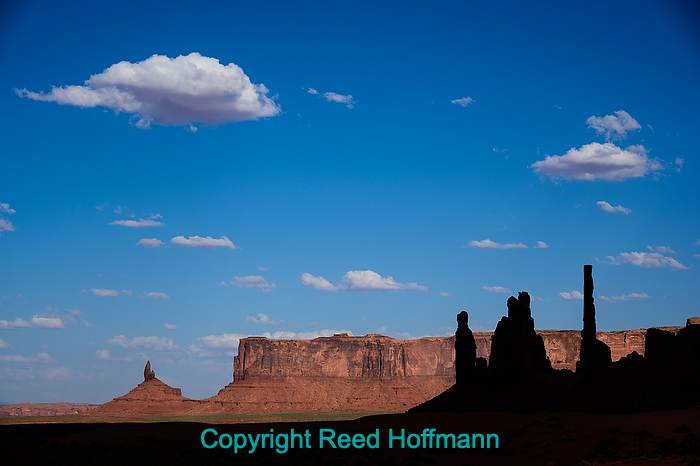
Fantastic photos! Definitely interested in attending a similar workshop in 2020
I can’t recommend it highly enough. Horseshoe Bend was wonderful and we got lucky, and the excursion to Bryce Canyon was great. The highlight for me, and the reason I picked this particular trip, was Monument Valley night photography. The combination of our wonderful guide and Reed was excellent and I am still delighted going through the photos over a month later.
Thanks Sean!
Great images! Great workshop! Great leaders!
Thanks for a wonderful trip Reed.
Thanks Norm, you’re always welcome on any of my trips!